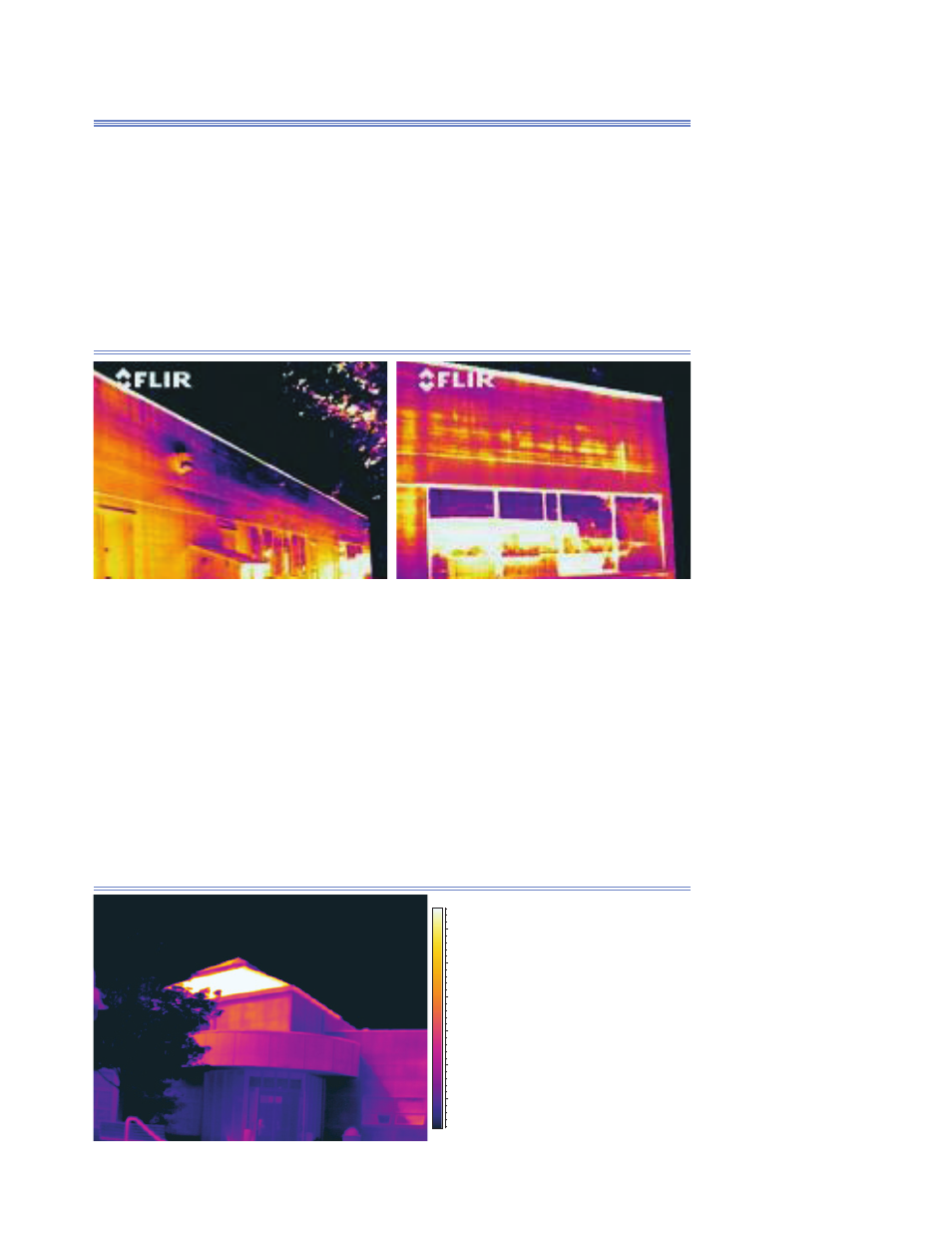G.4.1 angle of view, G.4.2 background radiation and solar insolation – Retrotec USACE User Manual
Page 341

Appendix G G11
G.4 Factors Infl uencing the Thermal Image or Thermogram
If temperatures are to be considered, several factors that affect the measured
values of surface temperature captured by the camera need to be considered.
Important in temperature determinations are the three components that the IR
camera receives—surface emittance, refl ection, and transmission—although
atmospheric distance, relative humidity, and atmospheric temperature need to
be considered when analyzing and interpreting the thermal image.
G.4.1 Angle of view
If we scan a target from too large an angle (e.g., an exterior wall of a build-
ing), the upper or remote part of the wall will look colder due to the large
angle, as described by the Lambert cosine law (emissivity is also dependent on
the angle of view). At large viewing angles, surface refl ection becomes more
apparent, providing the energy to the IR camera, which the camera interprets
as temperature. The upper areas of the building appear to be cooler due to the
increase in the refl ection of the cooler sky off the wall (see Figure G8).
G.4.2 Background Radiation and Solar Insolation
Figure G8. Image of a single-story building. The cooling pattern is due to the cool sky refl ecting
due to the angle of the IR camera. The image on the right is taken with less of an angle,
eliminating the cooling pattern shown in the fi rst thermograph. (Images from BCRA.)
Figure G9. IR thermogram of a
two-story building. Temperature
patterns vary from differing
amounts of solar insolation due to
the various angles of the sun and
shading from overhangs. (Image
from BCRA.)
20.7
53.1 °C
25
30
35
40
45
50
